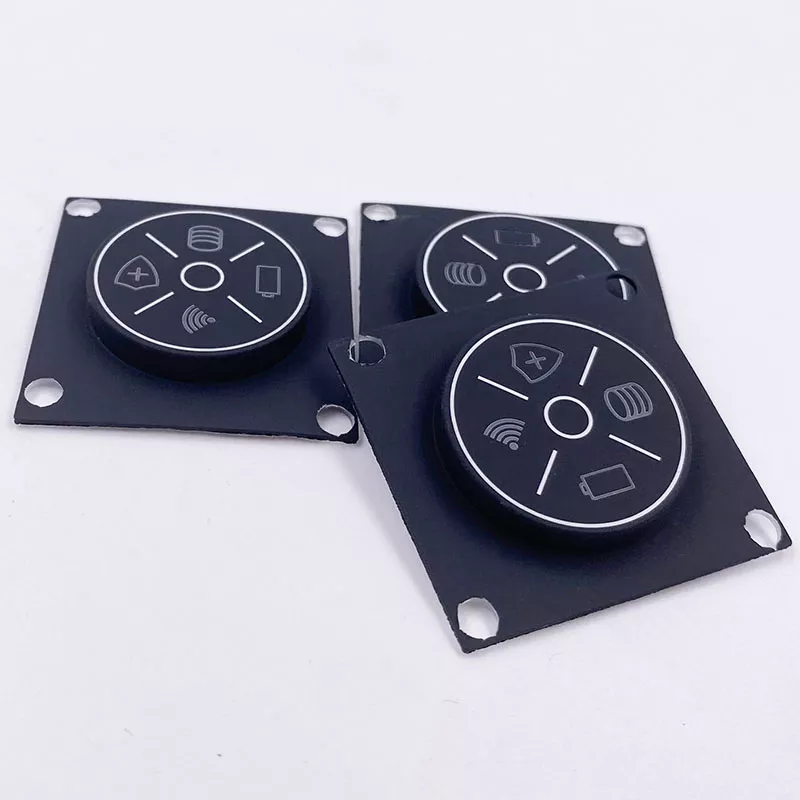Customizable Silicone Keypad for POS Terminals with Factory Price
Overview:
Silicone keypads, manufactured using silicone compression molding techniques, are crucial components known for their exceptional qualities. They offer outstanding heat and cold resistance, environmental durability, superior electrical insulation, and resilience against fatigue. These attributes make them indispensable in electronic devices like calculators, remote controls, telephones, cordless phones, electronic toys, computer keyboards, and educational devices. Silicone keypads consistently deliver reliable performance as interface components across a wide array of technological applications.
Features:
– Origin: Manufactured in Xiamen, China.
– Brand: Available for OEM/ODM customization.
– Material: Crafted from high-quality silicone.
– Product Name: Silicone Keypads![]()
– Color: Customizable to meet specific requirements.
– Features: Offers exceptional resistance to both high and low temperatures.
– Service: Specializes in OEM custom-made solutions.
– Quality: Rigorously tested to ensure professional standards.
– Size: Tailored according to customer demands.
– Certifications: ISO9001, COC, CE, FDA, and ROHS certified.
– MOQ: Minimum Order Quantity of 100 pieces.
– Hardness: Ranges from 20 to 90 Shore A.
– Port: Shipped from Xiamen.
Design Elements of Silicone Rubber Push Button Keypads:
- Silicone Button and Key Design
– Precision engineering of button and key shapes for optimal functionality and user experience.
- Silicone Button Pads Configuration
– Arrangement and layout of silicone button pads to ensure ergonomic usability and durability.
- Flexible Webbing of Buttons and Keys
– Integration of flexible webbing to provide tactile feedback and enhance button responsiveness.
- Travel Distance of Buttons and Keys
– Determination and calibration of button travel distance to meet specific user interface requirements.
- Conductive Properties of Buttons: Carbon Pills and Graphite Pads
– Incorporation of conductive materials like carbon pills and graphite pads to facilitate electrical conductivity in button actuation.
Notes:Designers and manufacturers of silicone keyboards must meticulously consider actuation force, structural aspects, surface finish, and material requirements. This includes symbol and icon integration, protective keyboard cover options, and selecting suitable silicone materials based on transparency, hardness, and color coating specifications.
Surface Symbols and Icons on Silicone Keypads:
- Screen Printing for Surface Symbols
– Utilization of screen printing techniques to apply precise symbols and icons on silicone keypads, ensuring durability and clarity.
- Laser Etching for LED Backlighting

– Implementation of laser etching processes to create illuminated symbols and icons on silicone keypads, enhancing visibility in low-light environments.
- Embossed and Debossed Molded Symbols
– Integration of embossed and debossed molding techniques to imprint tactile symbols and icons onto silicone keypads, providing enhanced tactile feedback and durability.
Conductive Materials in Silicone Rubber Keypads:
- Graphite Pads and Carbon Pills
– Graphite pads and carbon pills are utilized for their conductivity in silicone rubber keypads, ensuring reliable electrical contact.
- Electrically Conductive Printing Ink
– Electrically conductive printing ink is applied to silicone rubber keypads to achieve conductivity, suitable for various electronic applications.
- Metal Domes
– Metal domes are integrated into silicone rubber keypads to provide tactile feedback and electrical conductivity, enhancing user interaction.
- Gold Pills and Copper Pads
– Gold pills and copper pads are employed in silicone rubber keypads for their superior conductivity and durability in electronic devices.
- Nickel Pills
– Nickel pills are utilized in silicone rubber keypads to maintain conductivity and ensure long-term performance in demanding environments.
Manufacturing Process for POS Terminal Silicone Rubber Keypad:
- Material Preparation:
– High-quality silicone rubber is carefully selected and blended with curing agents and pigments to achieve specific properties like flexibility, durability, and color consistency.
- Mold Preparation:
– Precision metal molds are meticulously designed with cavities that precisely mirror the keypad’s layout and incorporate spaces for conductive elements if required.
- Compression Molding:
– The prepared silicone material is injected into the mold cavities. The mold is then closed, and heat and pressure are applied. Heat softens the silicone, allowing it to flow into the mold’s intricate details, while pressure ensures uniform material distribution.
- Curing:
– The mold remains closed under pressure as the silicone undergoes curing, chemically cross-linking to form a solid rubber. This stage is critical for achieving the desired hardness and resilience of the keypad.
- De-molding and Finishing:
– After curing, the mold is opened, and the newly formed silicone rubber keypad is removed. Excess material is trimmed, and each keypad undergoes meticulous quality inspections.
- Conductive Printing:
– Conductive inks are applied to specific areas of keypads requiring electrical conductivity, ensuring optimal functionality within electronic circuits.
- Surface Coating:
– Depending on requirements, surface coatings such as polyurethane (PU) or epoxy may be applied to enhance durability and provide a desired tactile response.
- Final Inspection:
– Each keypad undergoes rigorous quality checks to ensure it meets stringent standards before being carefully packaged for shipment.

